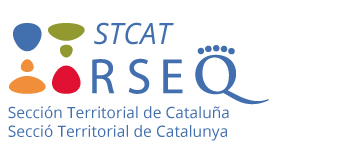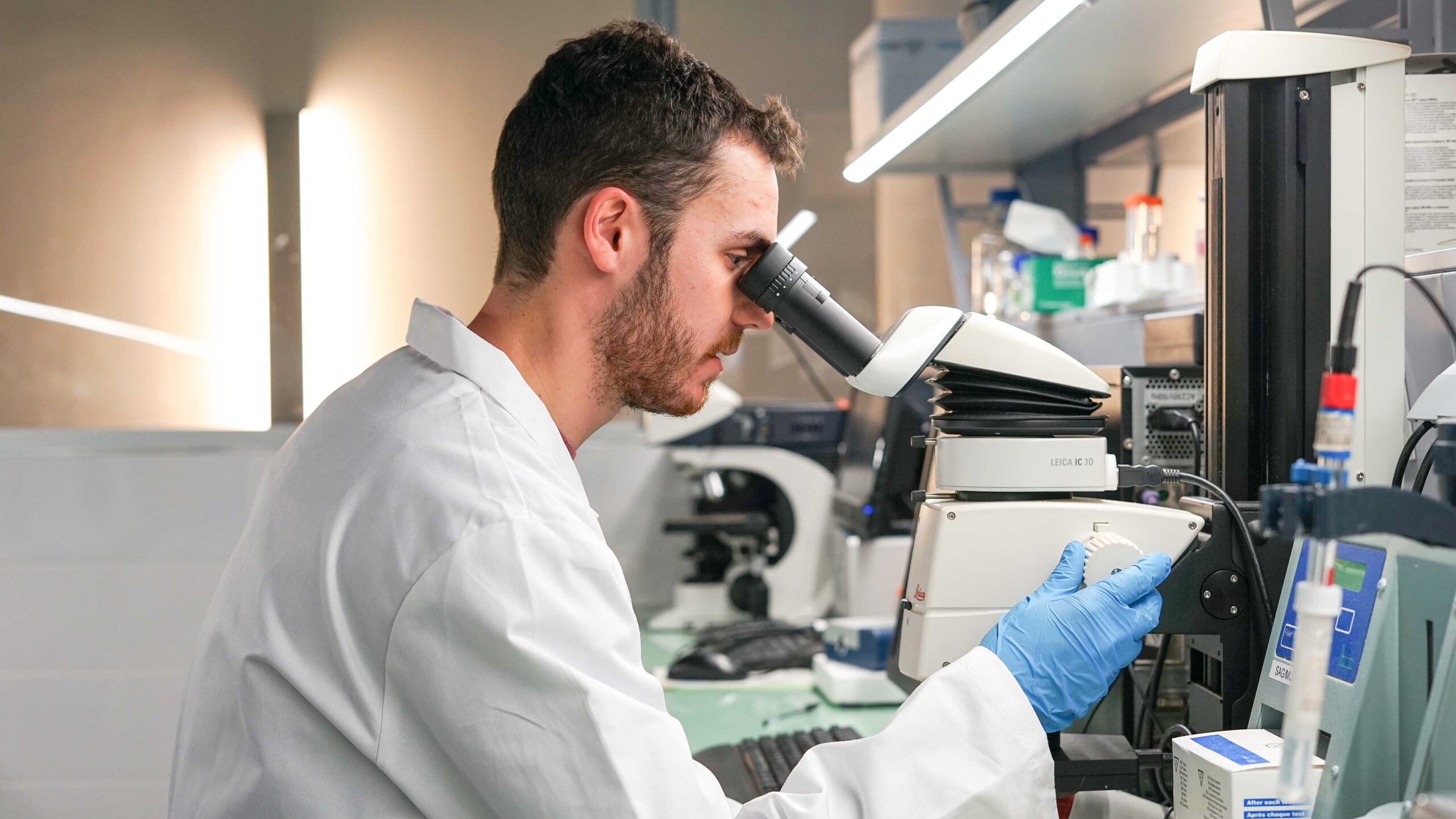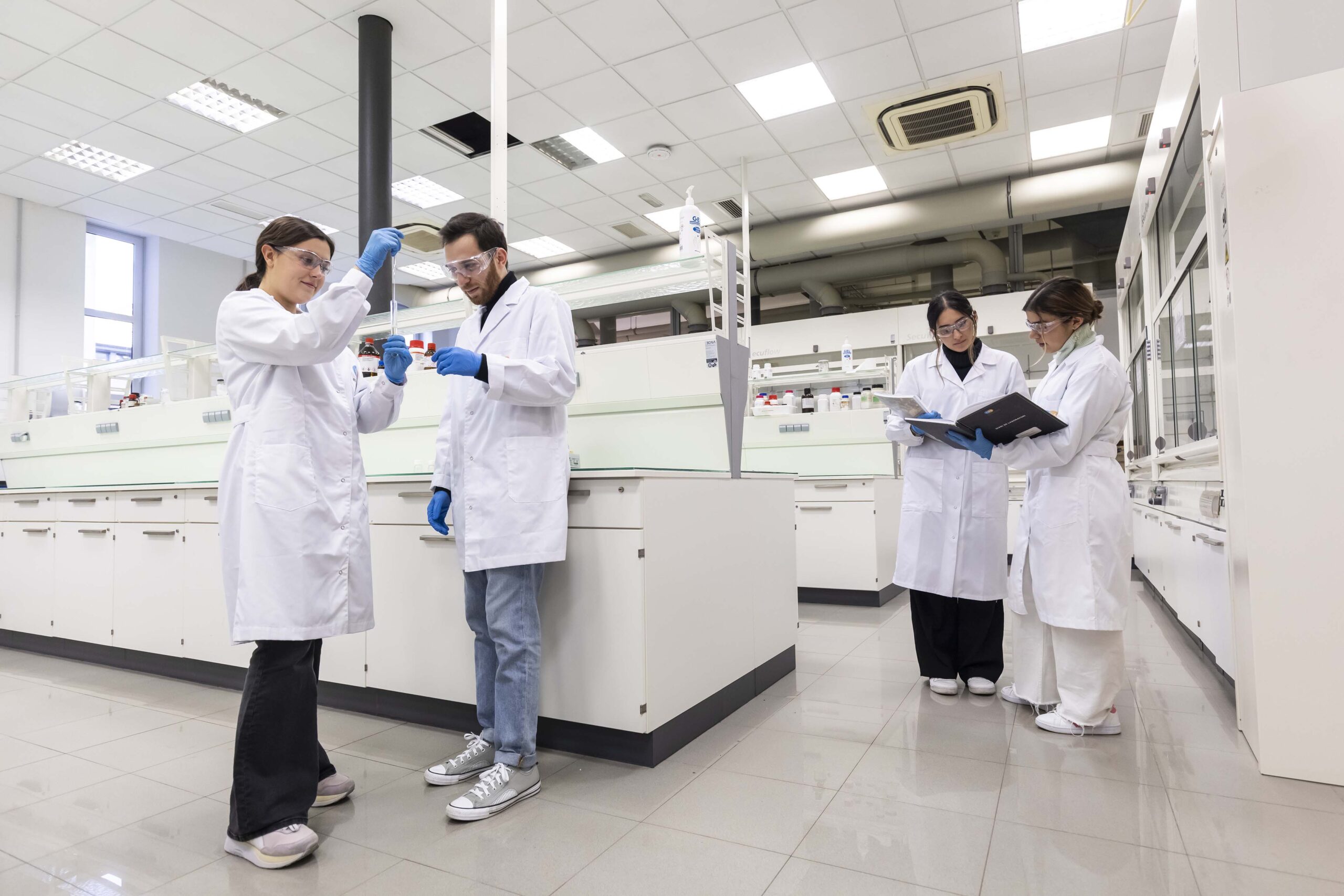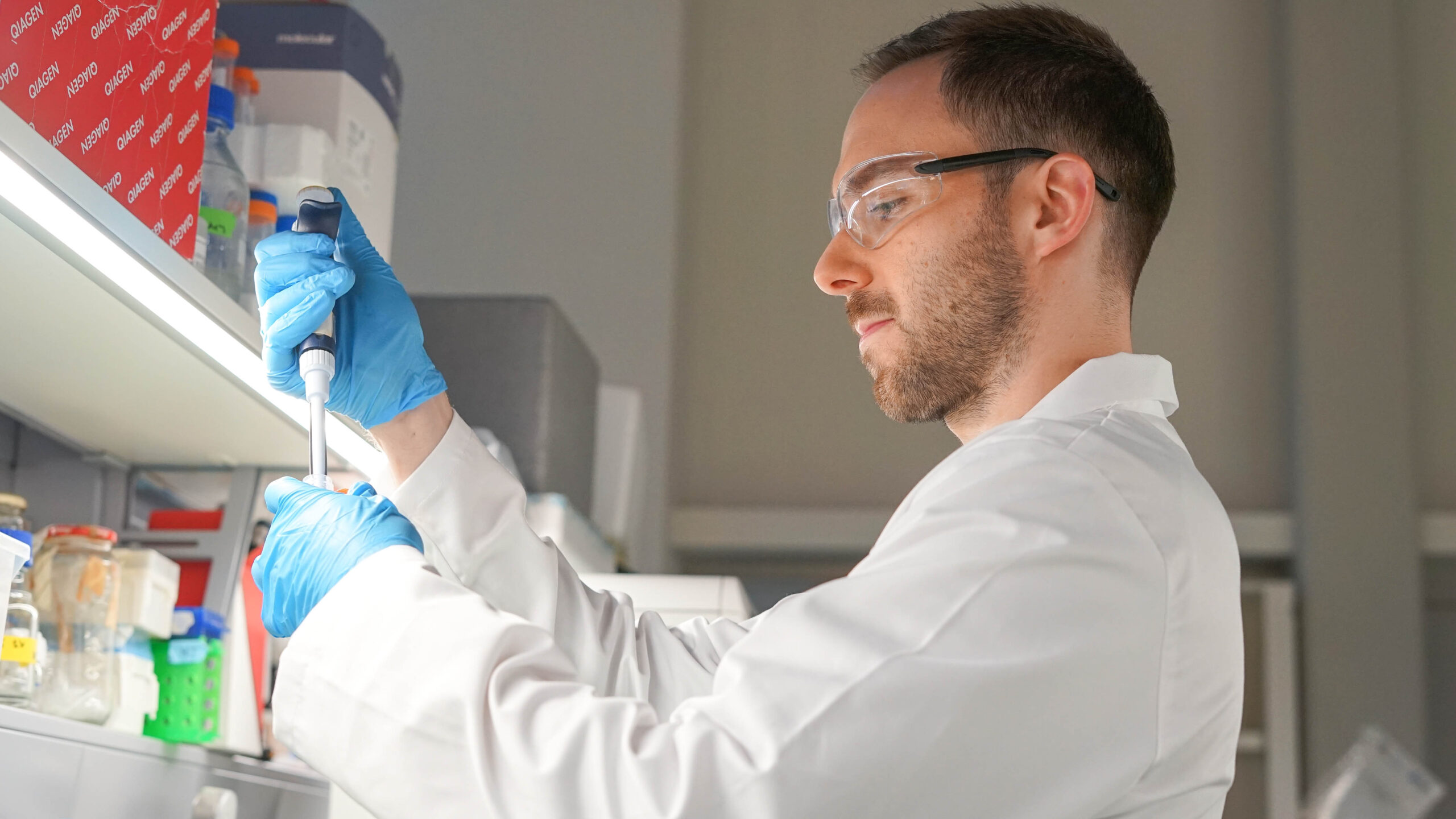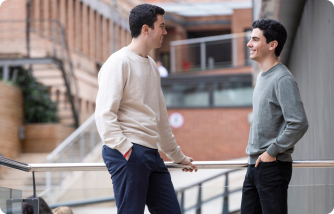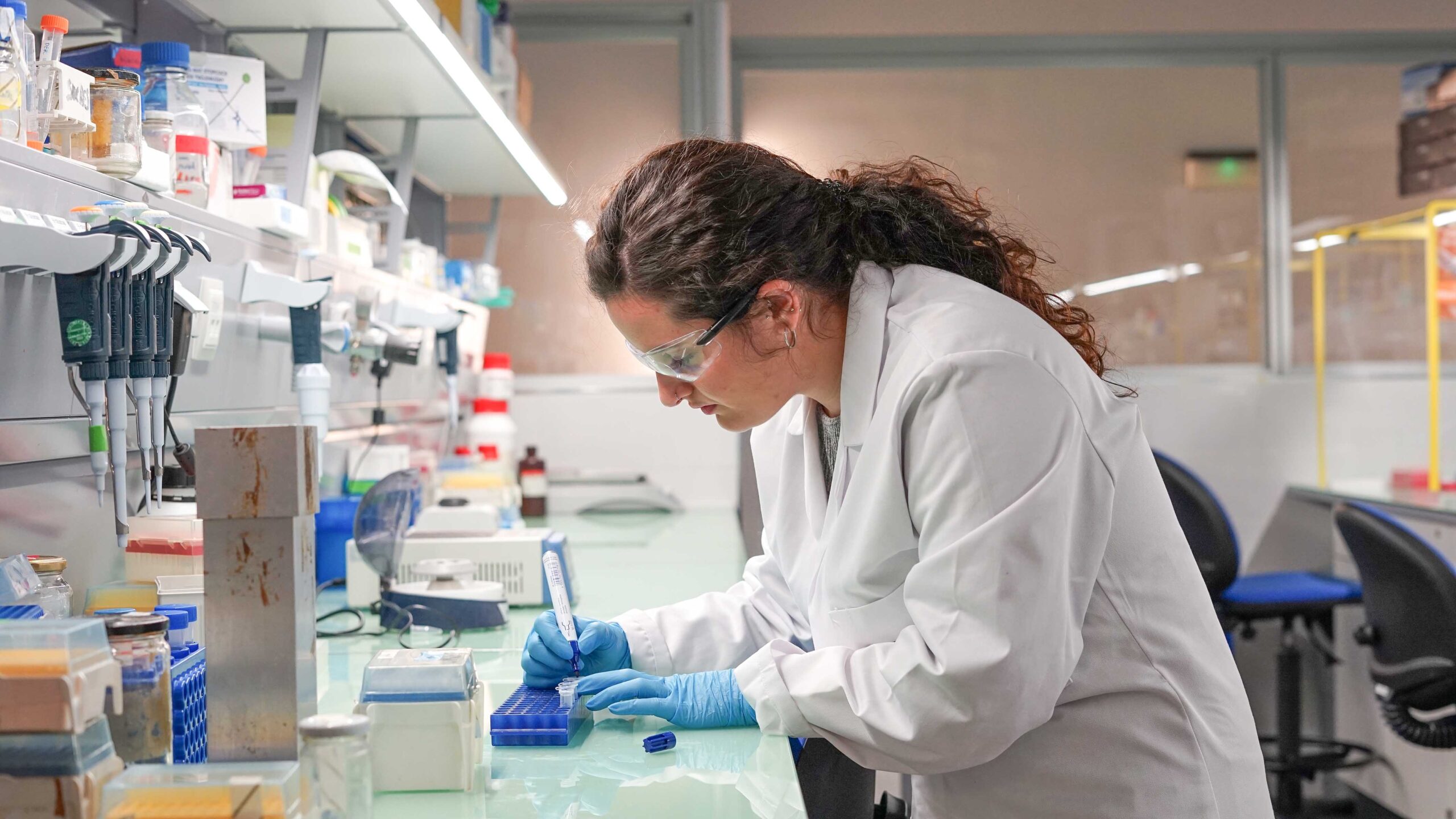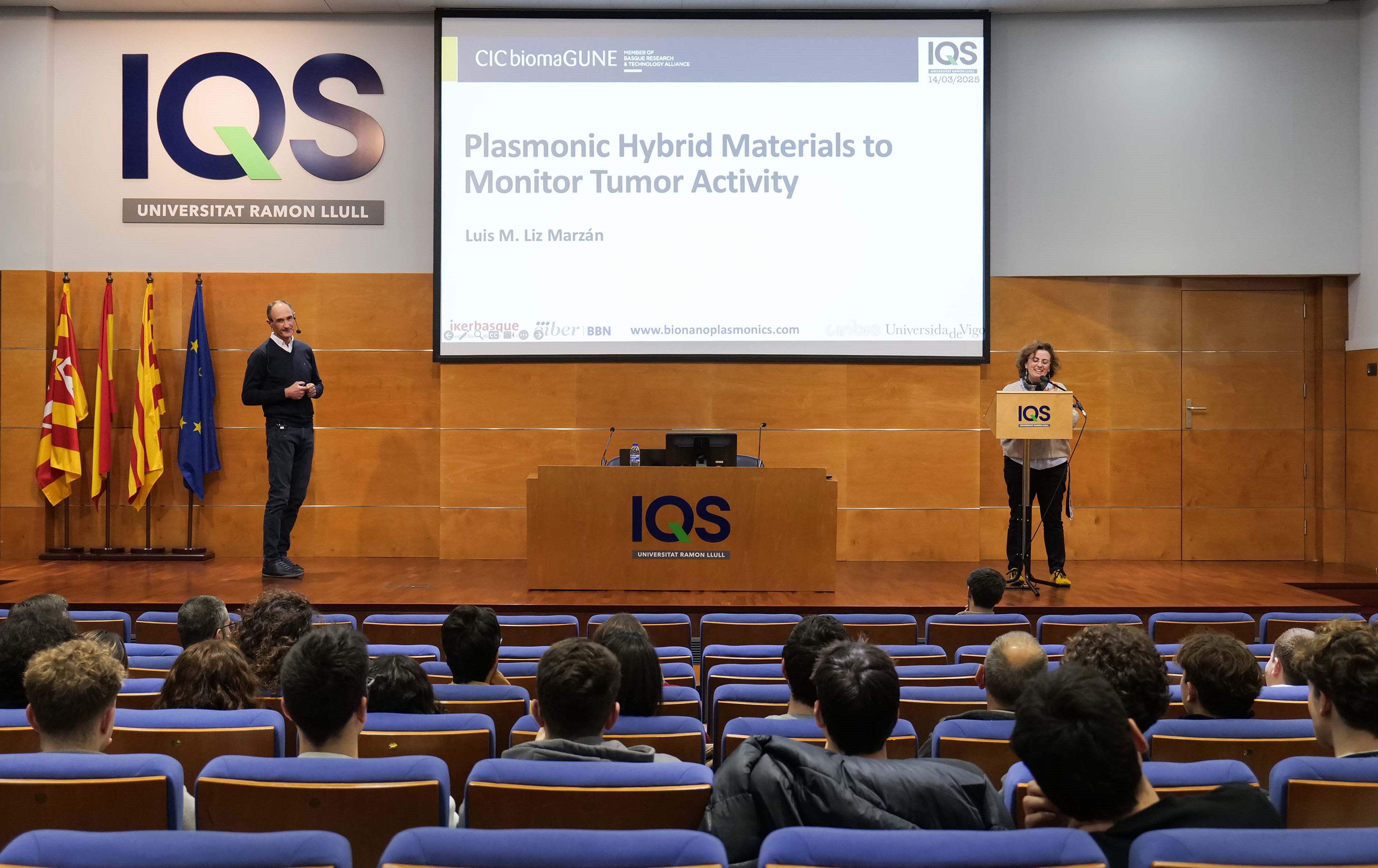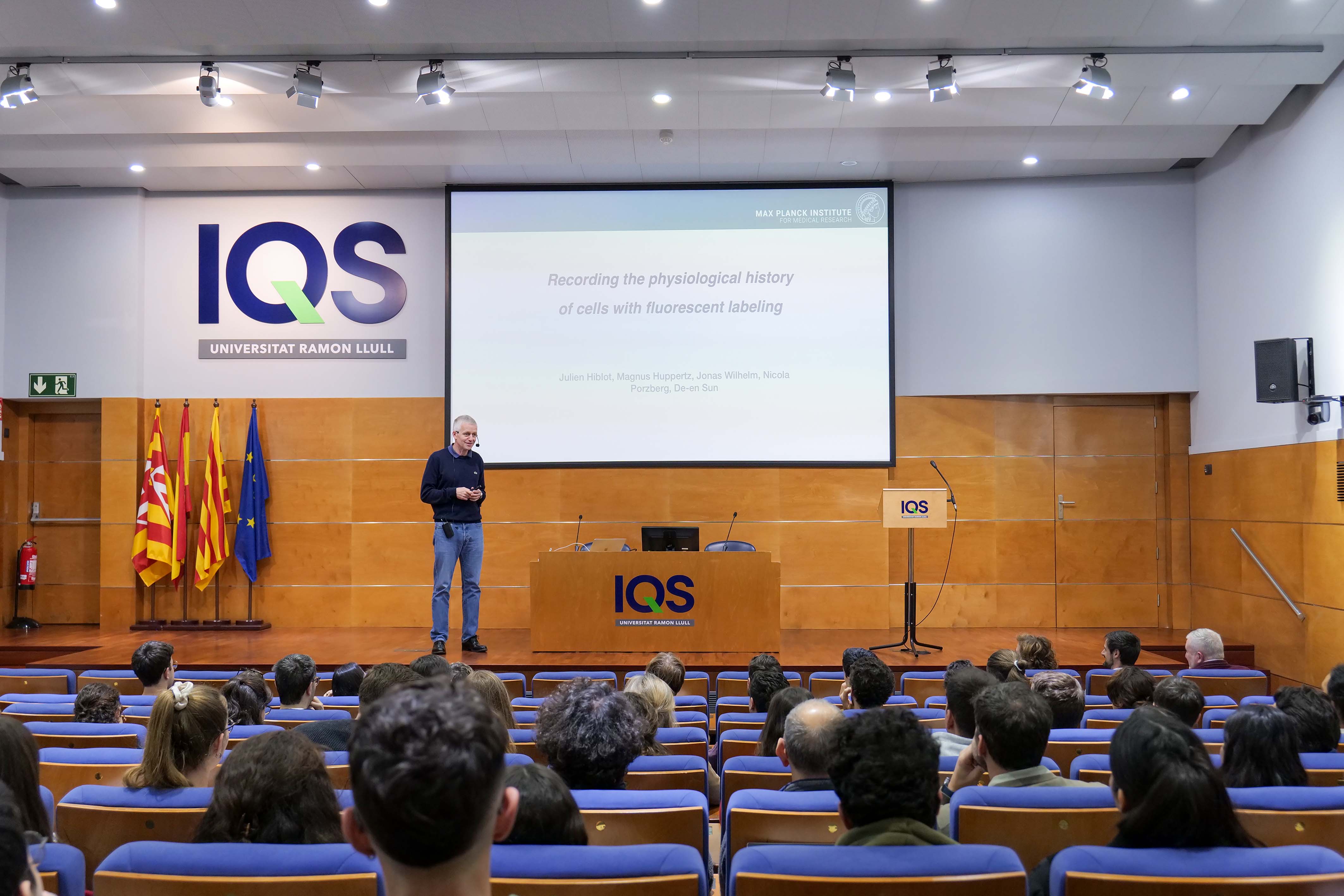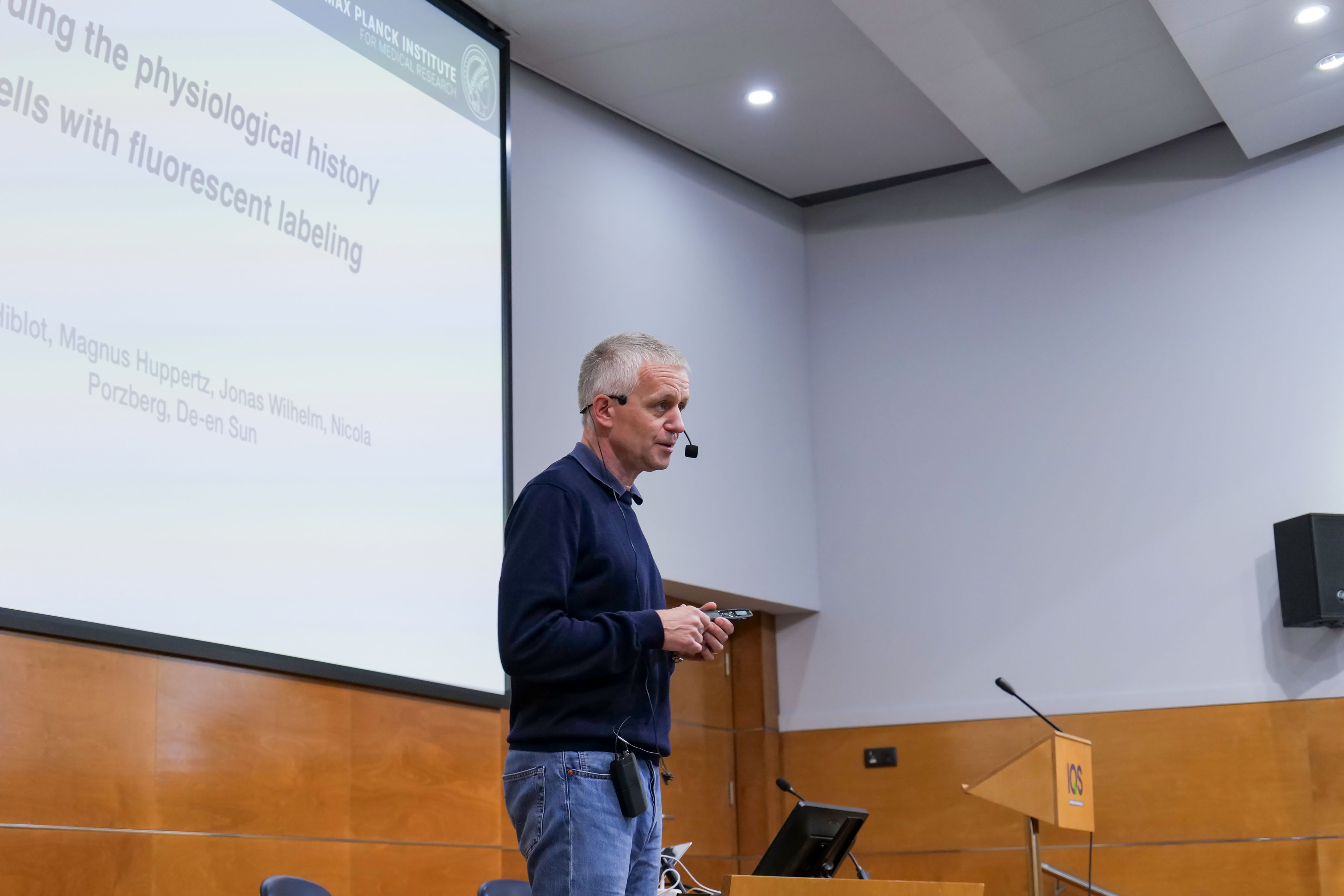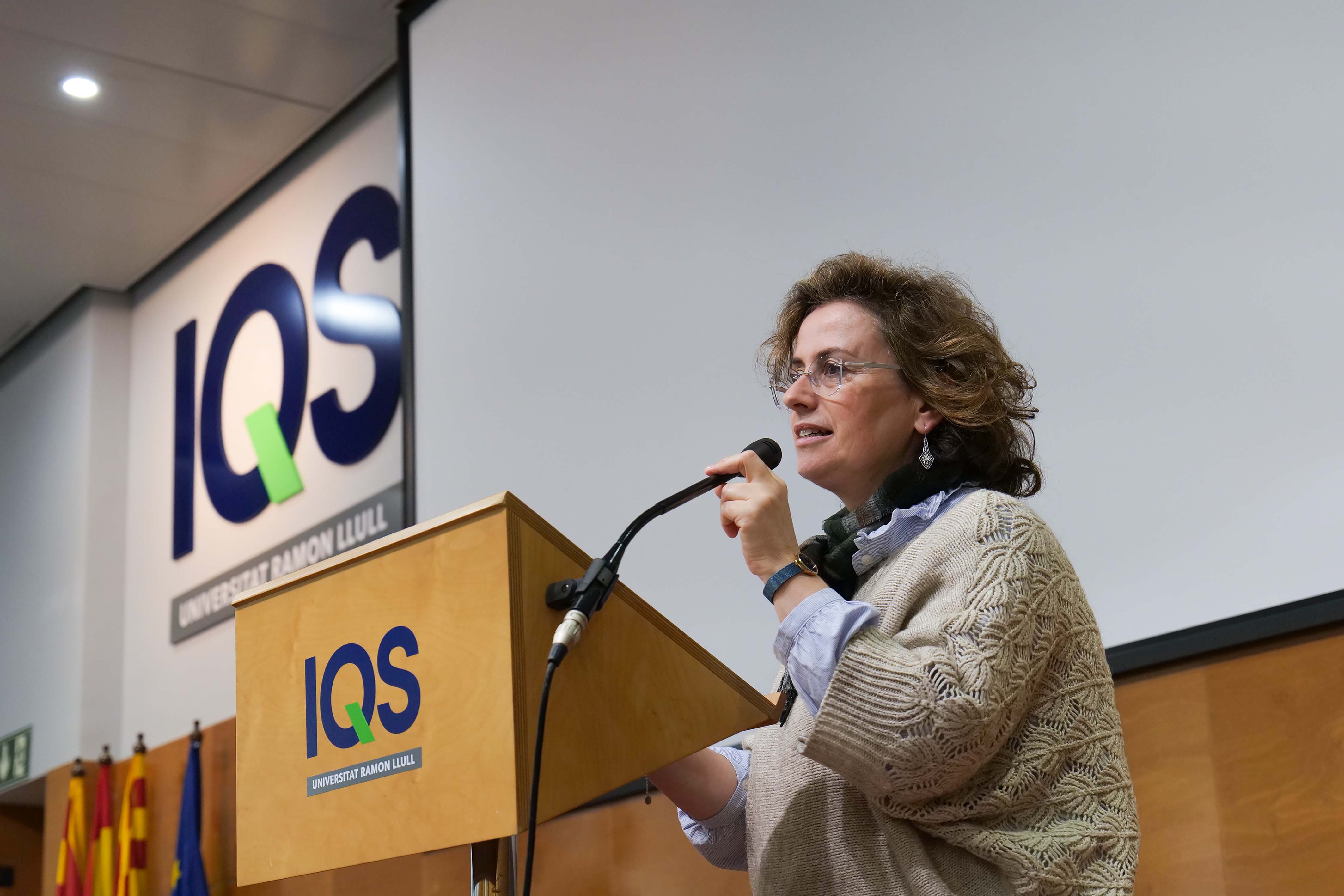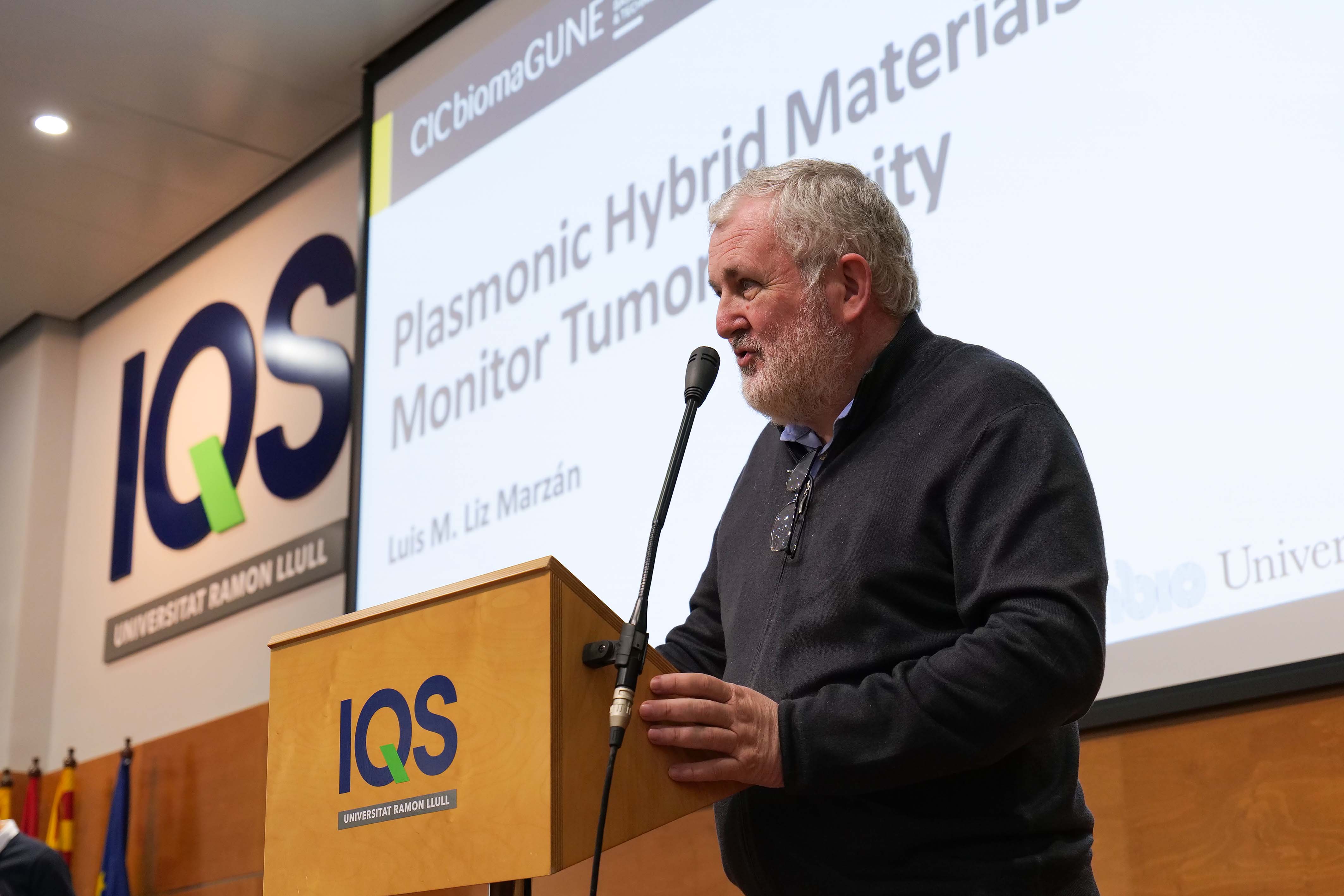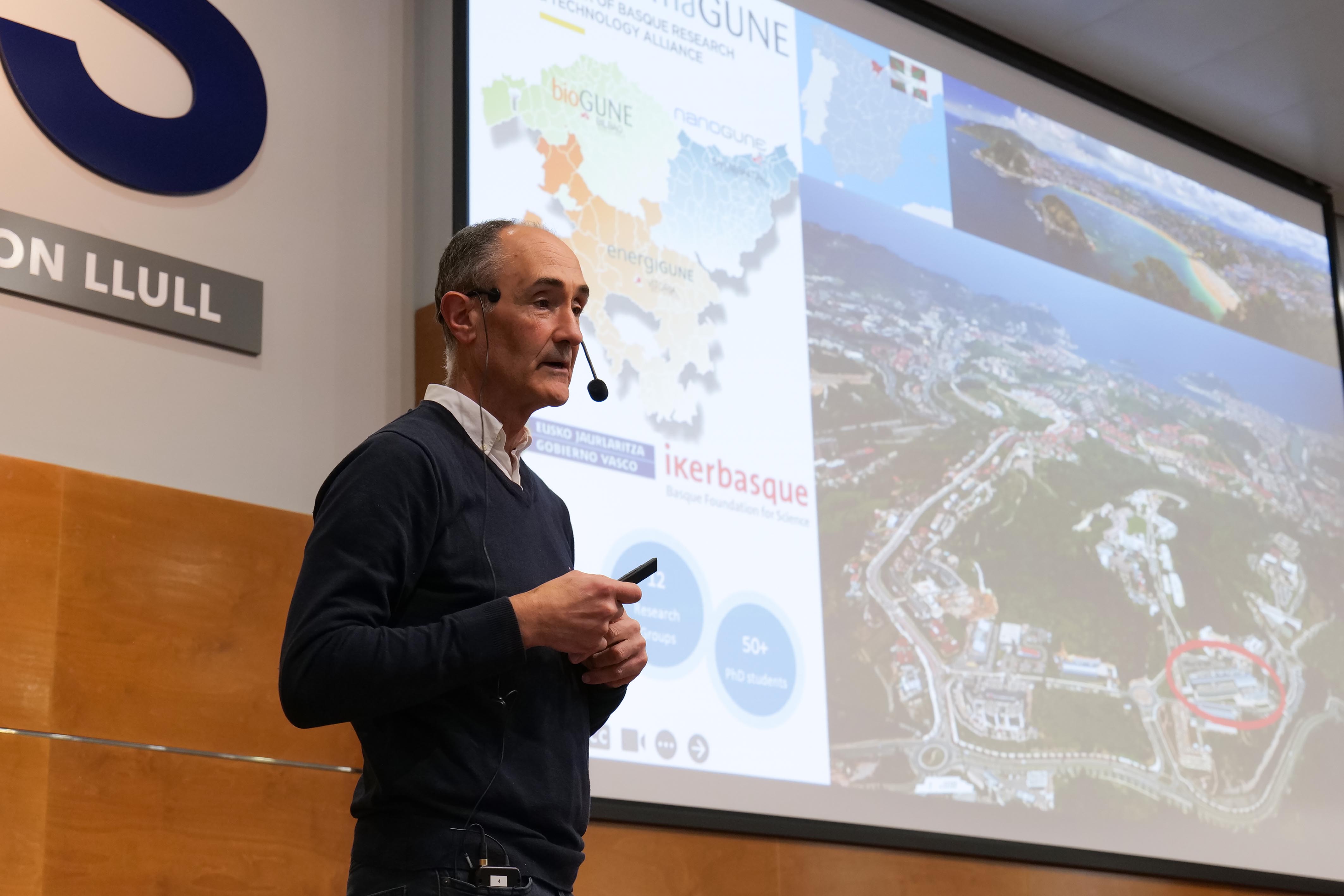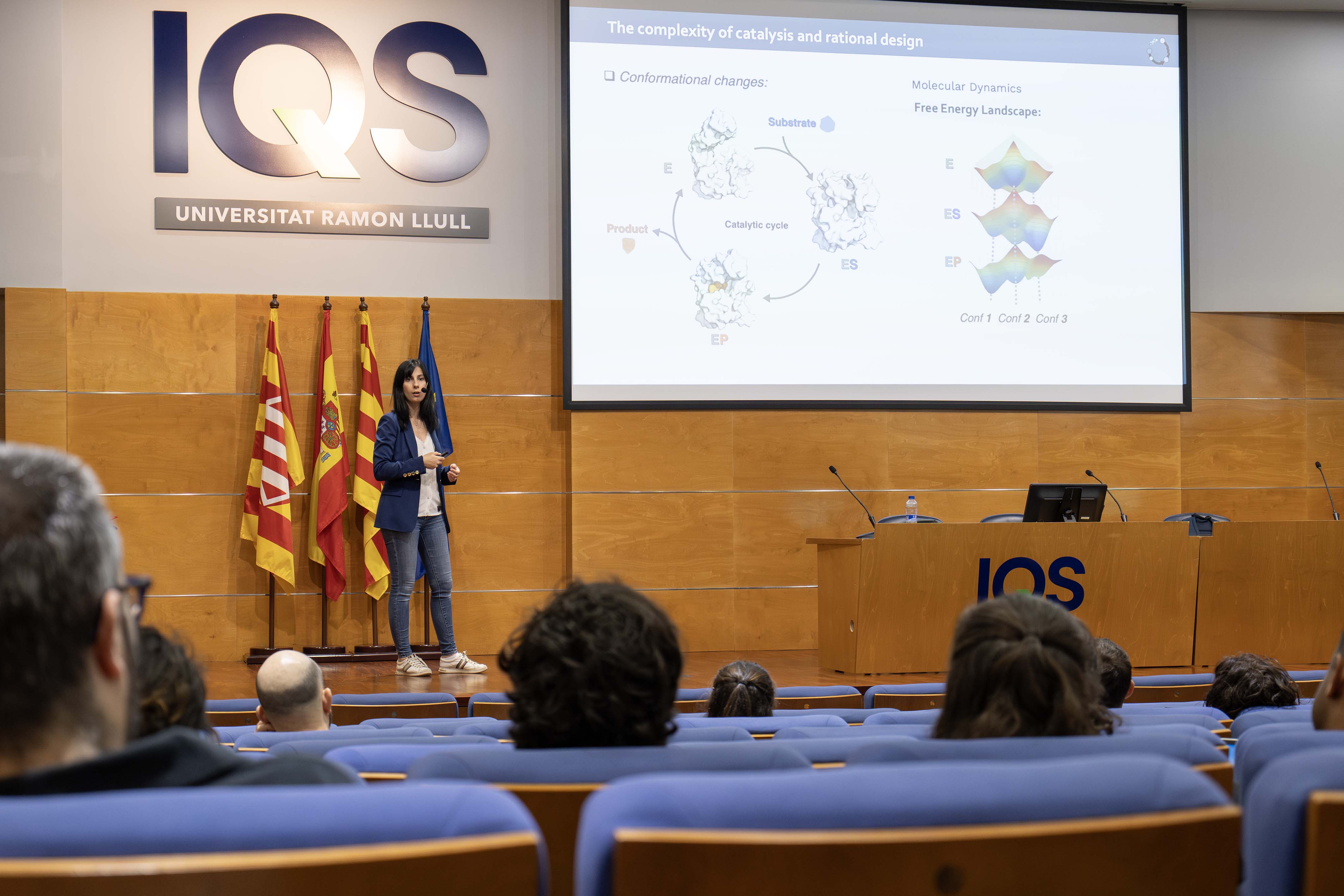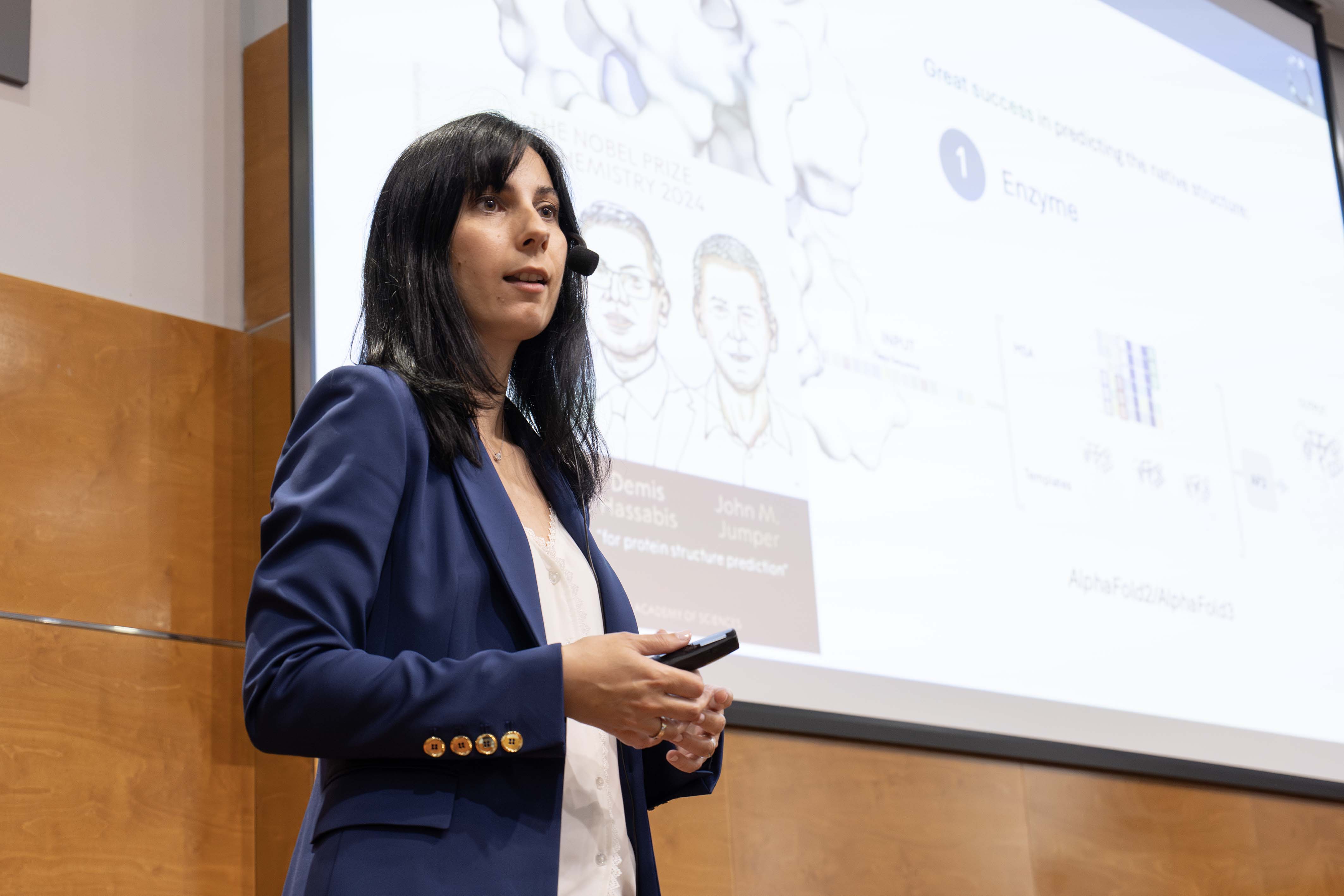In academic year 2024-25, IQS has offered a new series of lectures within the ChemBioEng IQS Talks cycle. As its name suggests, this cycle is designed to welcome researchers with international prestige within the three fundamental areas of Chemistry, Biosciences, and Engineering. For yet another year, the talks cycle was coordinated by Dr Ana Belén Cuenca, director and professor with the Department of Organic and Pharmaceutical Chemistry, and Dr Benjamí Oller, professor with the Department of Bioengineering, both from the IQS School of Engineering, with the support and collaboration of Dr Salvador Borrós, Director of IQS.
In this year’s edition, the leading subjects in the conference included biological chemistry, bionanoplasmonic materials, and the computational design of enzymes.
Chemistry as a marking element of cell history
The first lecture (November 2024) was by Dr Kai Johnsson, Director of the Department of Biological Chemistry at the Max Planck Institute for Medical Research and Professor at the Institute of Chemical Sciences and Engineering at the École Polytechnique Fédérale de Lausanne. The main line of his research entails developing chemical approaches to visualize and manipulate biochemical agents in living cells.
In his lecture “Recording the physiological history of cells with chemical labelling,” Dr Johnsson demonstrated the research carried out by his group to face the challenges posed by recordings of cell physiology, which help to better understand biological processes, yet are difficult to record.The approach presented by Dr Johnsson is based on the use of proteins designed to be labelled in the presence of both a specific physiological activity – which controls the degree of labelling – and a fluorescent substrate – which determines the presence of the substrate. The applications of this methodology include the recording of protein-protein interactions, receptor activation, and intracellular calcium elevations. Finally, Dr Johnsson presented some applications of these marking and tracking systems in the case of cerebral glioblastoma, protein kinase signalling, and the identification and monitoring of drug mechanisms of action.
Plasmonic materials to monitor tumour activity
Dr Luis M. Liz-Marzán presented the second conference of this cycle (March 2025) with his speech entitled “Plasmonic Hybrid Materials to Monitor Tumour Activity.” Professor Liz-Marzán is the scientific director of CIC biomaGUNE, a member of the Basque Research and Technology Alliance (BRTA), and leader of the BioNanoPlasmonics group at this centre of excellence.
In his lecture, Dr Liz-Marzán presented an overview of the fabrication of nanoplasmonic blocks and their integration into materials and devices for real detection and diagnostic applications. Nanoplasmonics is a branch of nanoscience that studies how light interacts with metallic nanoparticles, especially gold and silver. These interactions generate surface waves, called plasmons, which allow light to be concentrated in very small spaces. Thanks to this, nanoplasmonics has very useful applications in ultrasensitive sensors, biomedical imaging, and new technologies to detect diseases. Dr Liz-Marzán’s presentation focused on the application of nanostructured plasmonic substrates, formed by gold nanoparticle superlattices and 3D-printed hybrid scaffolds, with applications for the accurate detection of tumour metabolites using SERS (Surface Enhanced Raman Spectroscopy).
Computational design of enzymes
The last lecture of the third ChemBioEng IQS Talks cycle (May 2025) was given by Dr Silvia Osuna Oliveras, ICREA researcher at the Institute of Computational Chemistry and Catalysis with the Department of Chemistry at the University of Girona and an expert in the computational design of enzymes, essential systems for life since they accelerate chemical reactions on a biologically compatible time scale, as well as acting as catalysts with high specificity and selectivity. Under the title “How to computationally generate efficient enzymes?“, Dr Osuna presented an overview of the approaches to design enzymes with allosteric modulation of activity, carried out by her research group. These approaches are based on correlations derived from microsecond-scale molecular dynamics simulations, improved sampling techniques, and, more recently, the development and application of templates based on the AlphaFold2 program.
The ChemBioEng IQS Talks conference cycle has received external funding from the Catalan Territorial Section of the Royal Spanish Society of Chemistry, which we sincerely thank for their support.
